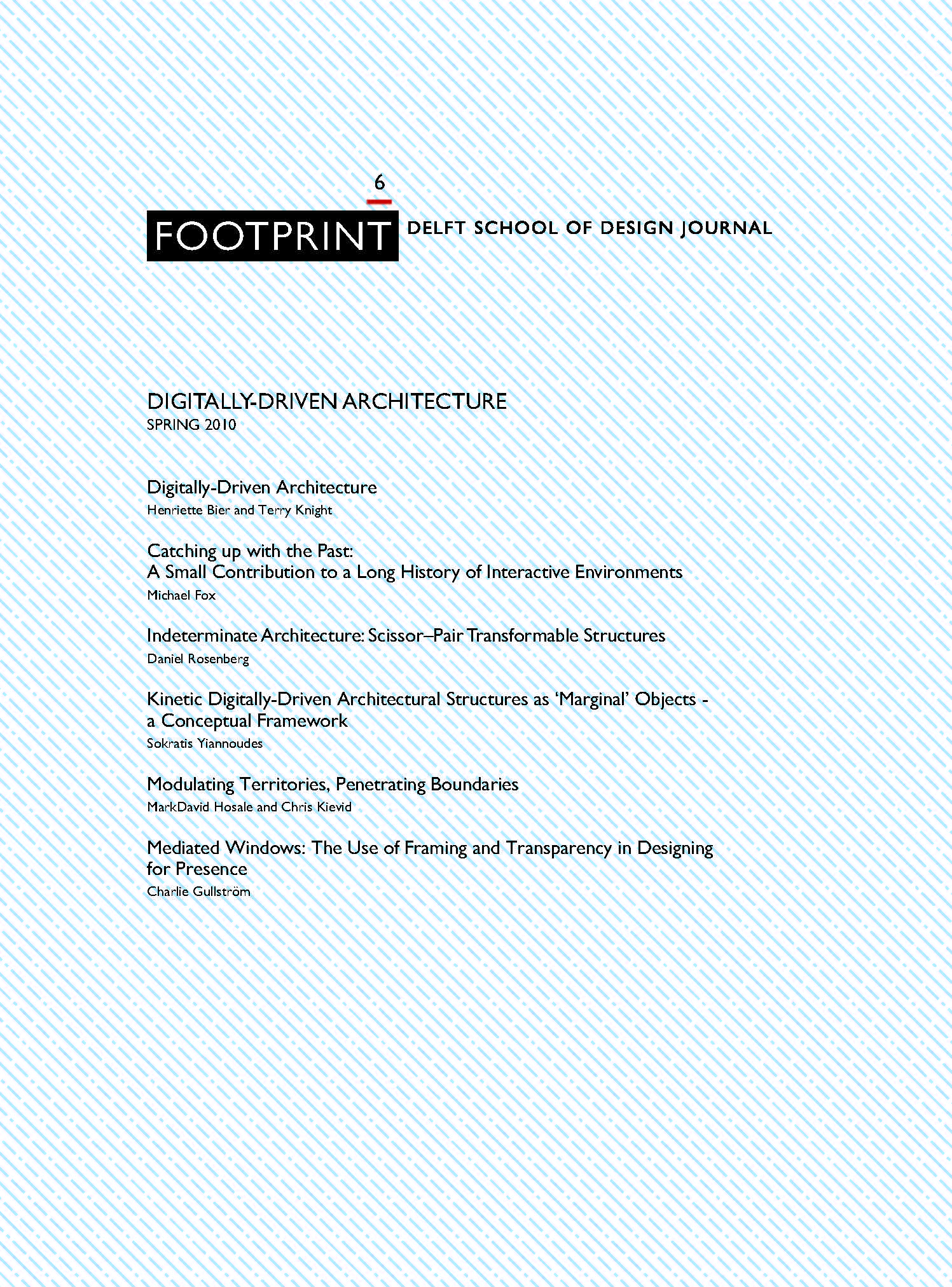Issue # 6 | Spring 2010 | Digitally-Driven Architecture

Similar to the way that industrial fabrication with its concepts of standardisation and serial production has influenced modernist architecture, digital fabrication influences contemporary architecture: While standardisation focused on processes of rationalisation of form, mass-customisation as a new paradigm that replaces mass production, addresses non-standard, complex designs based on non-Euclidean geometries. Furthermore, knowledge about the designed object can be incorporated at the level of its connectivity with data stemming not only from its geometry but also from its content and behaviour within an environment. Digitally-driven architecture implies, therefore, on the one hand, digitally designed and fabricated architecture, and on the other hand, it implies architecture controlled and actuated by digital means.
In this context, the sixth Footprint-issue is examining the influence of digital means on architecture as pragmatic and conceptual instruments for exploring and generating complex systems of spatial organisation as well as for constructing and actuating architecture. The focus is not only on computer-based generative systems for the development of architectural designs, but also on architecture incorporating aspects of digital sensing/actuating mechanisms that enable buildings to interact with their users and surroundings.
Issue's editors: Henriette Bier and Terry Knight




